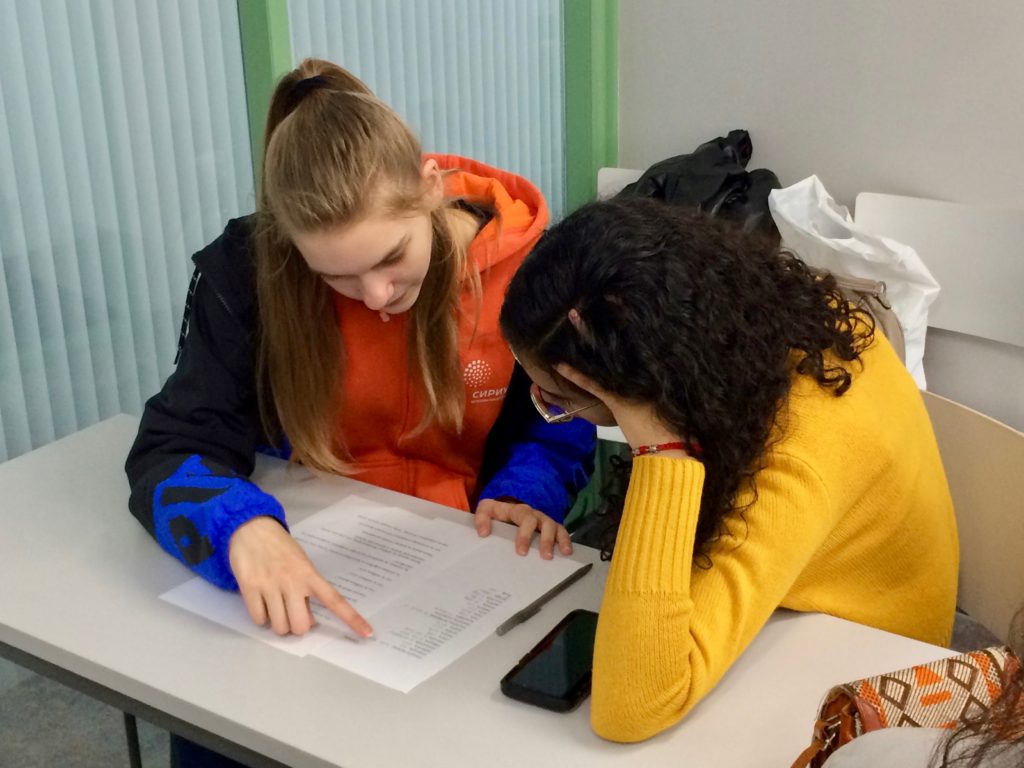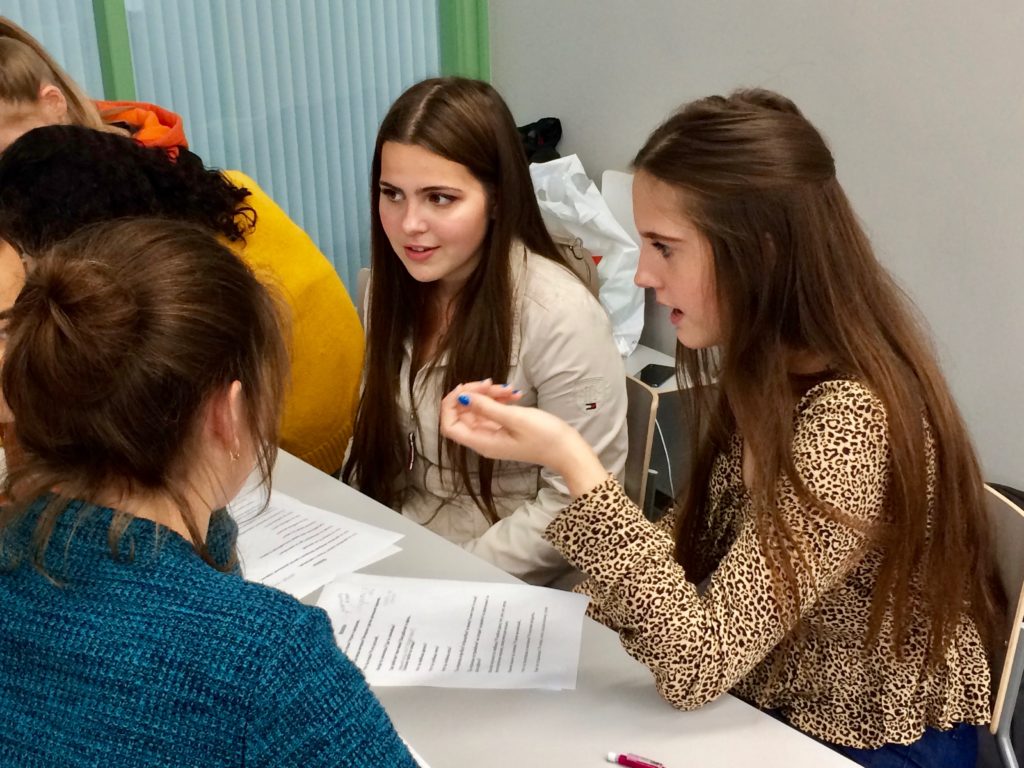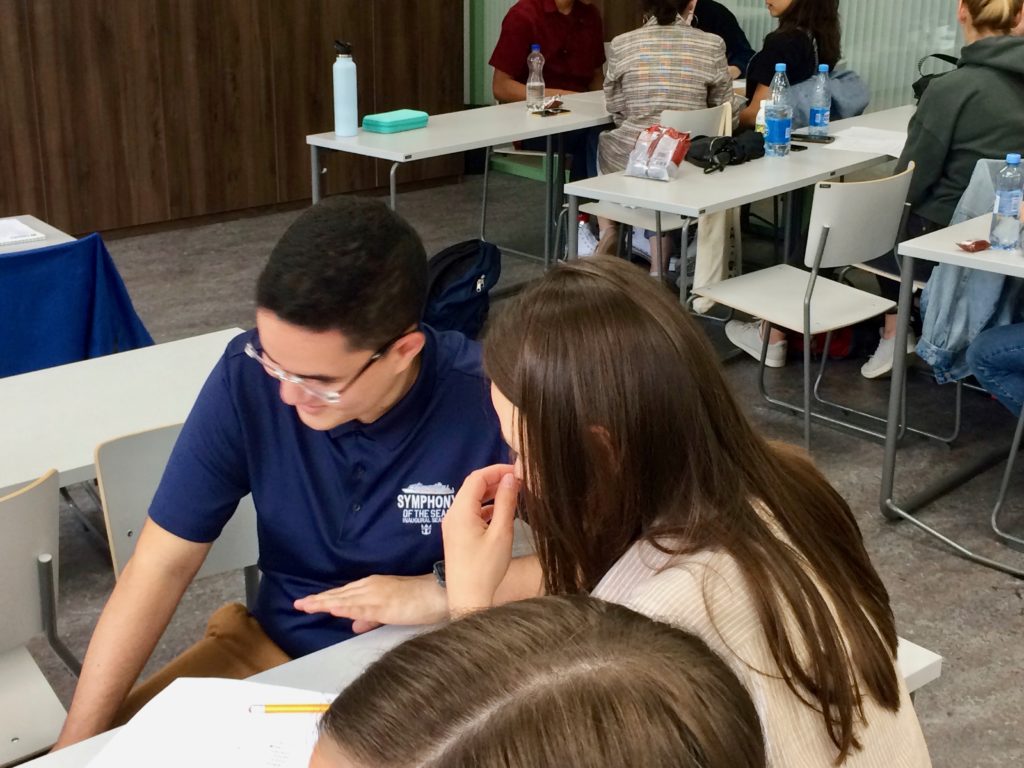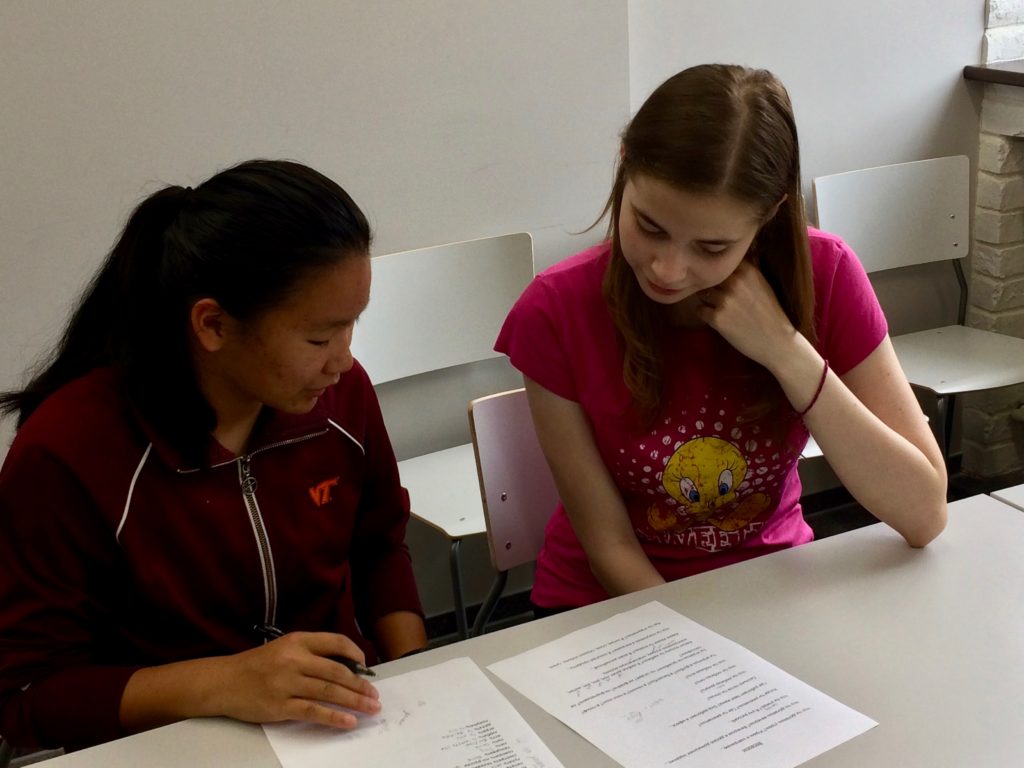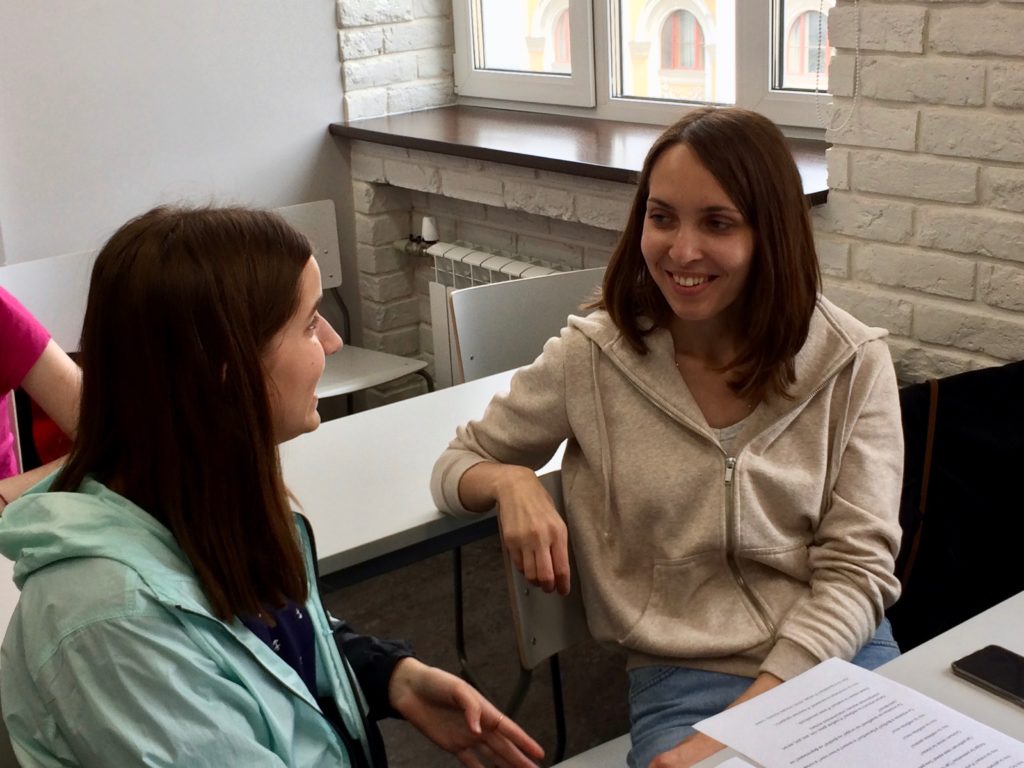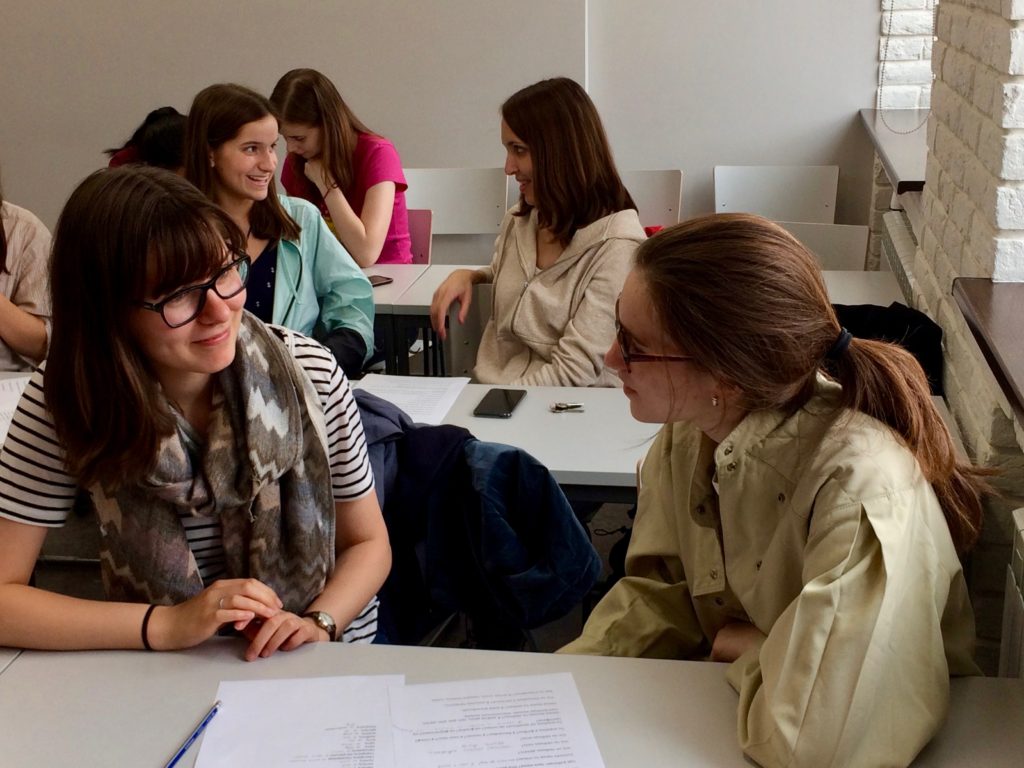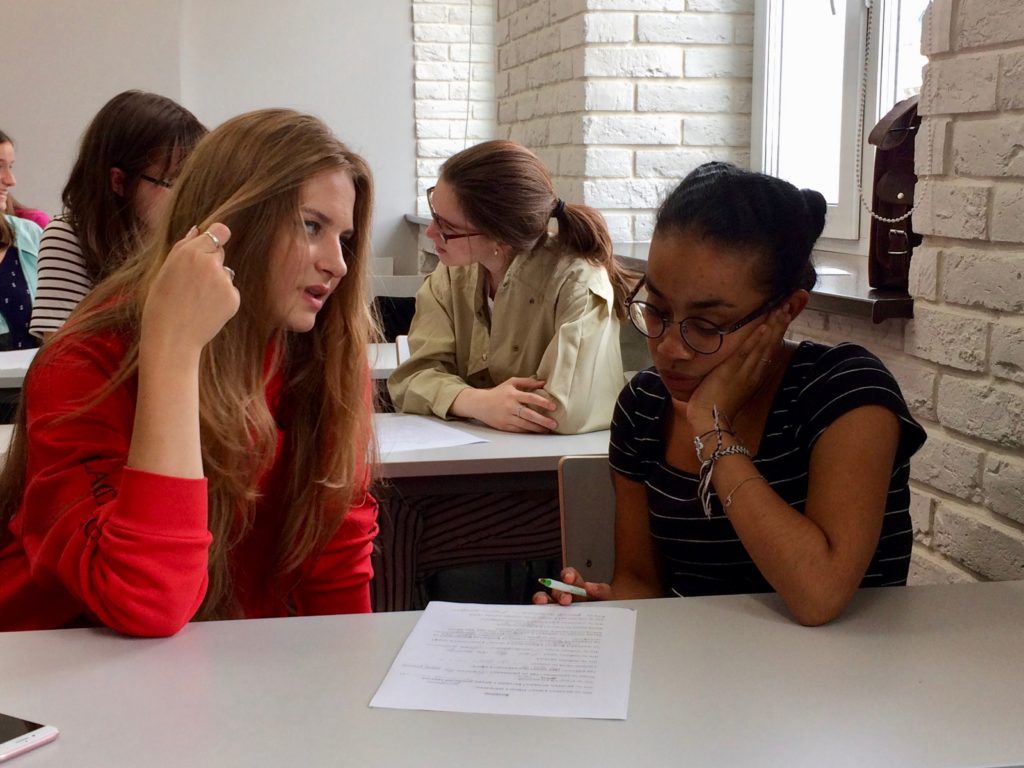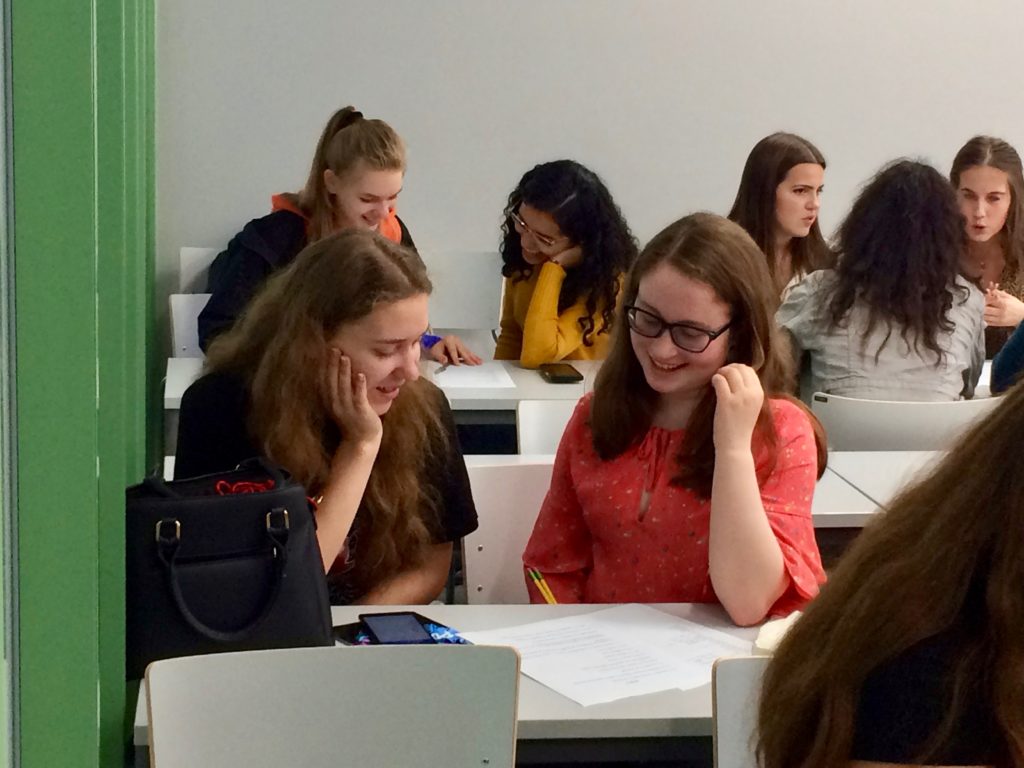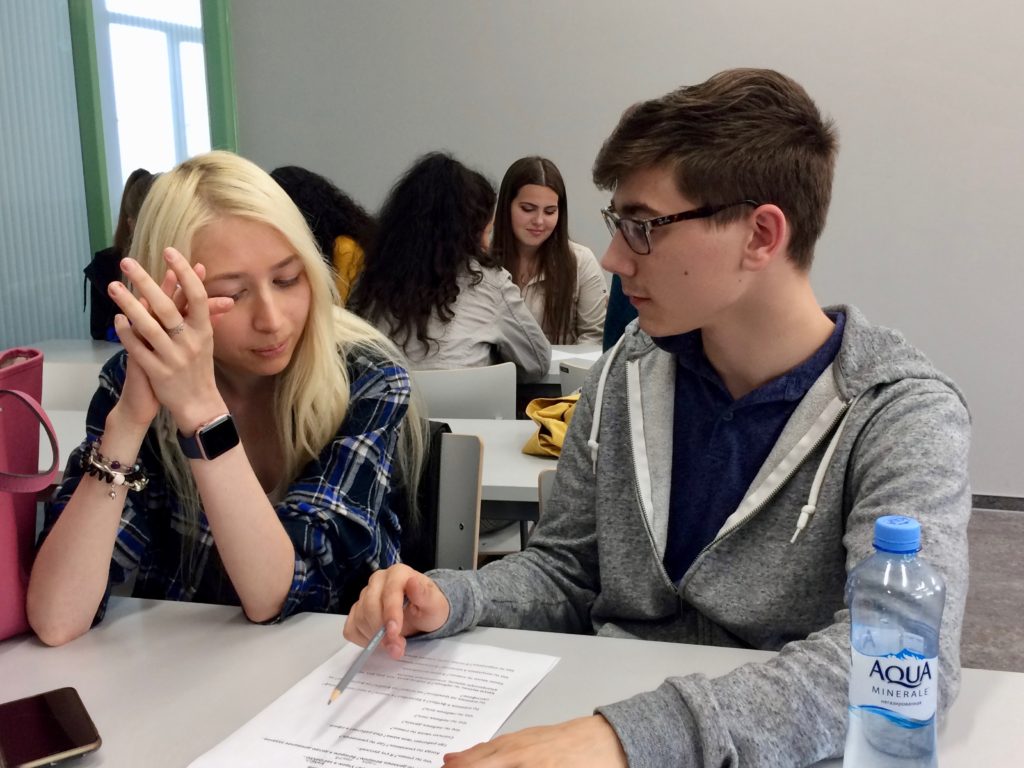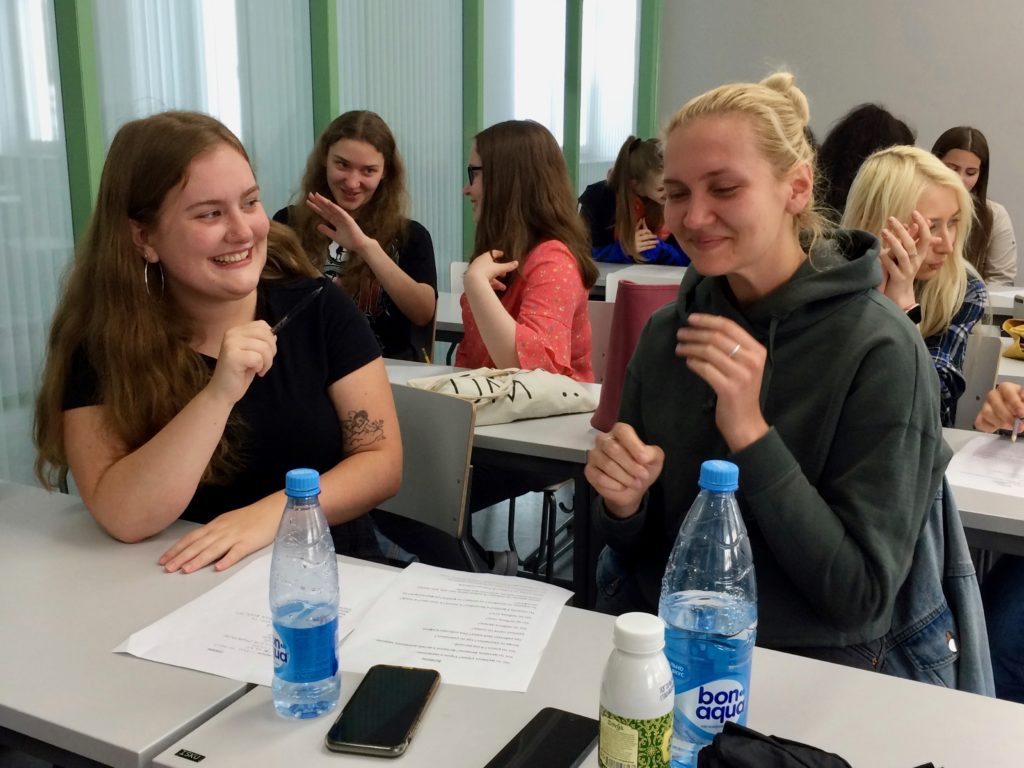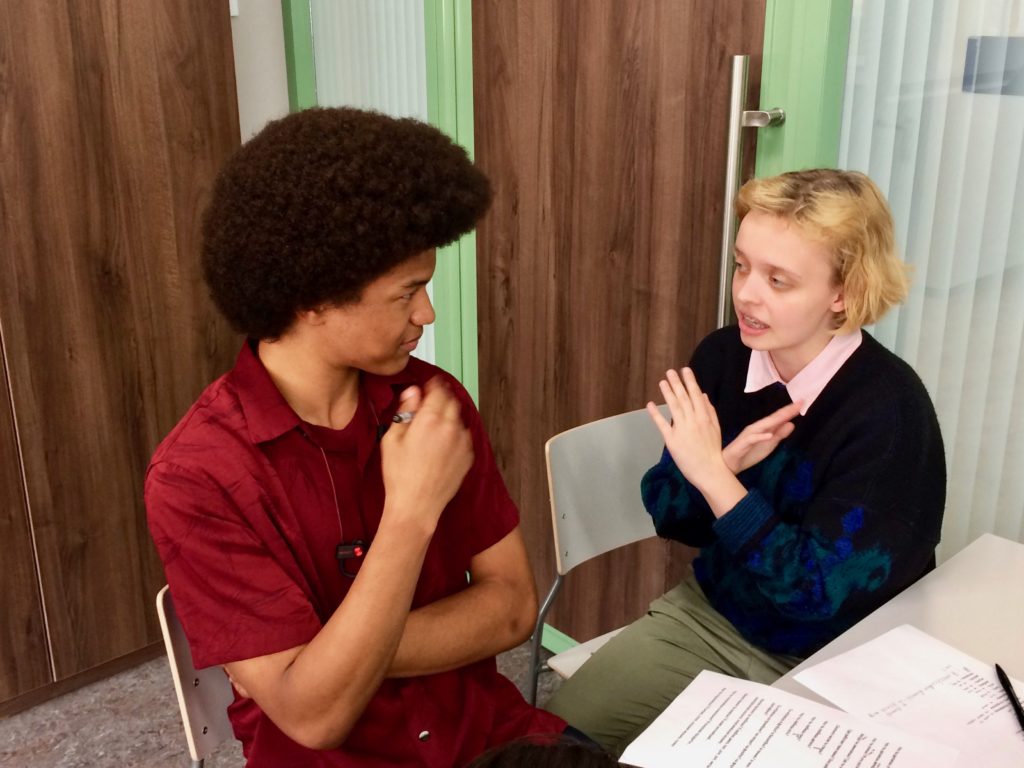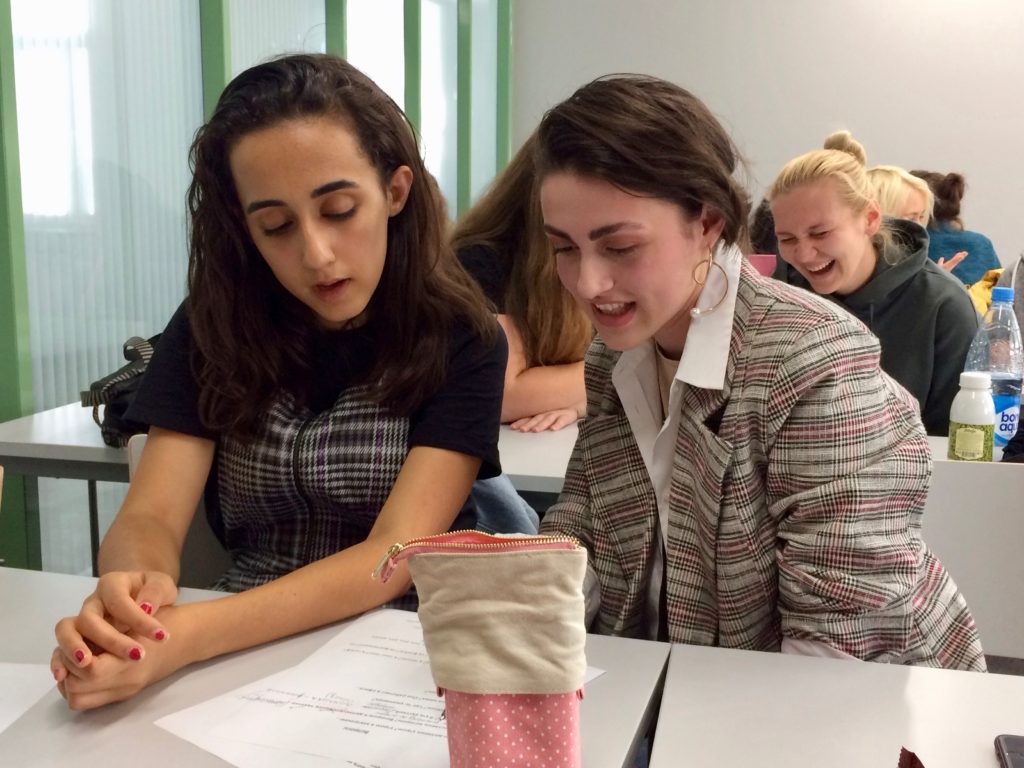Greetings from Moscow! The students are finishing their second week of the program and are making great strides in their acquisition of Russian. They have settled in with their host families and are navigating the Moscow subway system like pros. Here are some photos of what we have been doing this past week.
On Saturday, we enjoyed our first field trip in Moscow: a visit to the Moscow Kremlin. The word “kremlin” in Russian means “urban fortress,” and the Moscow Kremlin is the best known of the Russian kremlins. The Moscow Kremlin, or simply the Kremlin, is a walled complex located in the very heart of the city, overlooking the Moskva River to the south, Saint Basil’s Cathedral and Red Square to the east, and the Alexander Garden to the west. The Kremlin is made up of five palaces, four cathedrals, and the Kremlin walls with their towers. The complex now serves as a museum and as the official residence of the President of the Russian Federation.
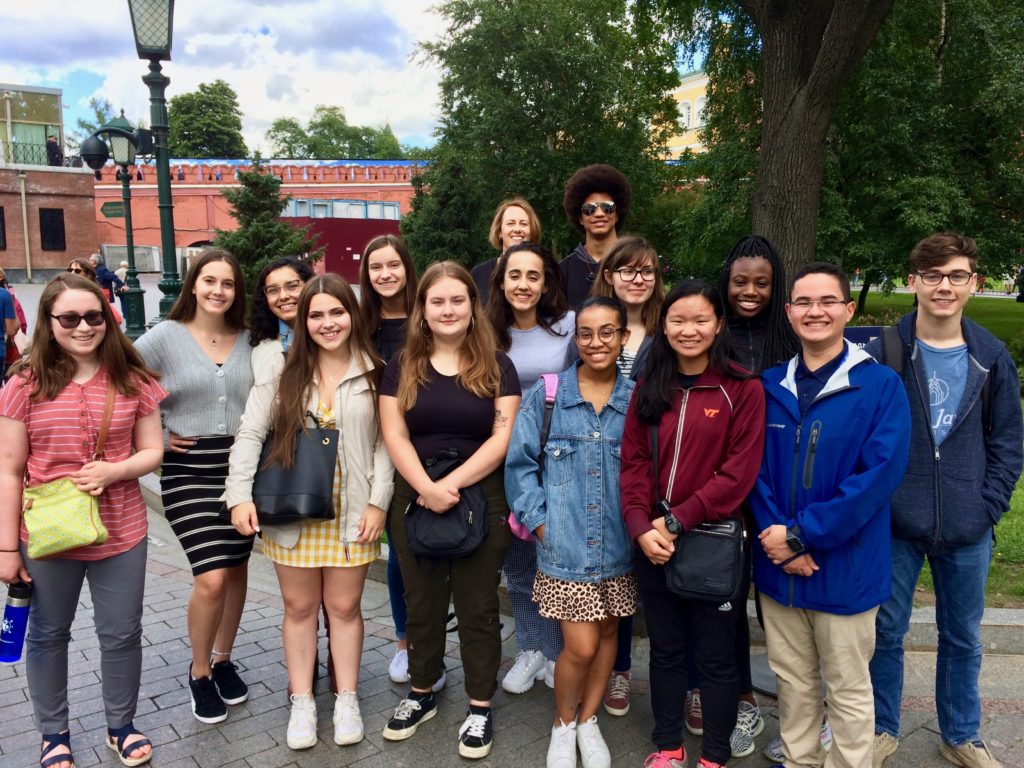
Waiting for our tour guide outside the Kremlin walls. You can see a small portion of the red Troitsky Bridge behind us. The bridge leads to the Troitskaya Tower, through which groups of visitors enter the Kremlin.
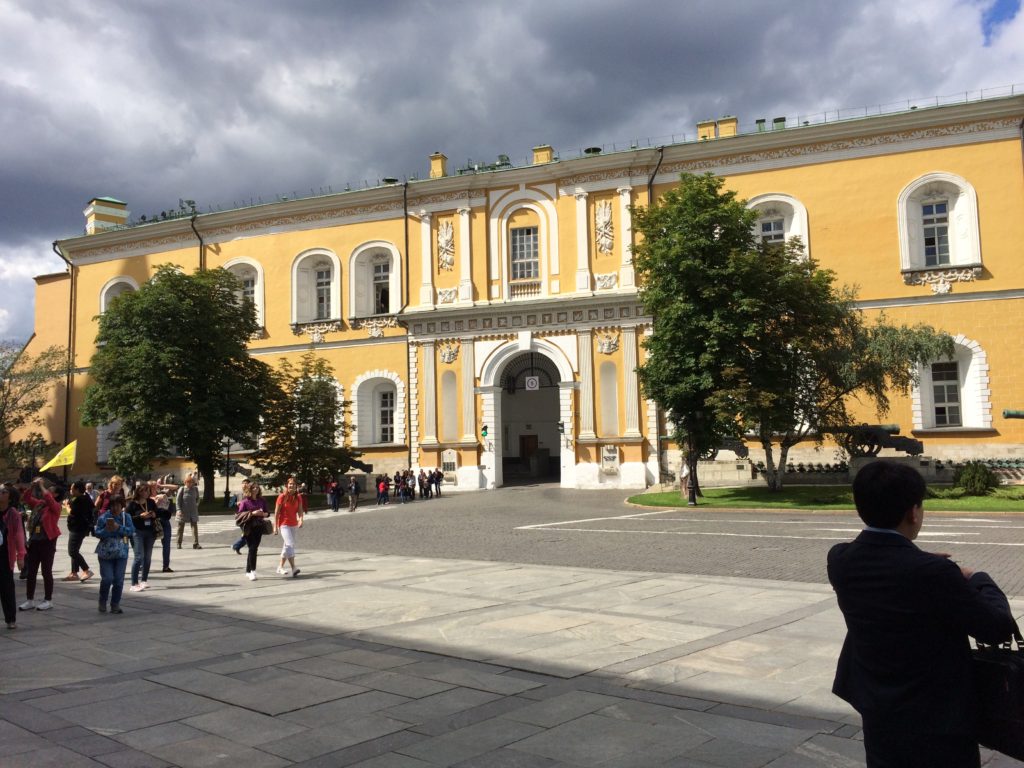
The Kremlin Arsenal, a former armory built within the grounds of the Moscow Kremlin, remains in military use to this day, unlike the Kremlin Armory, which is now a museum. Initially constructed in 1736, the Arsenal has been rebuilt several times. Although the building is not open for tours, we were able to see a portion of its short southern facade as we entered the Kremlin.
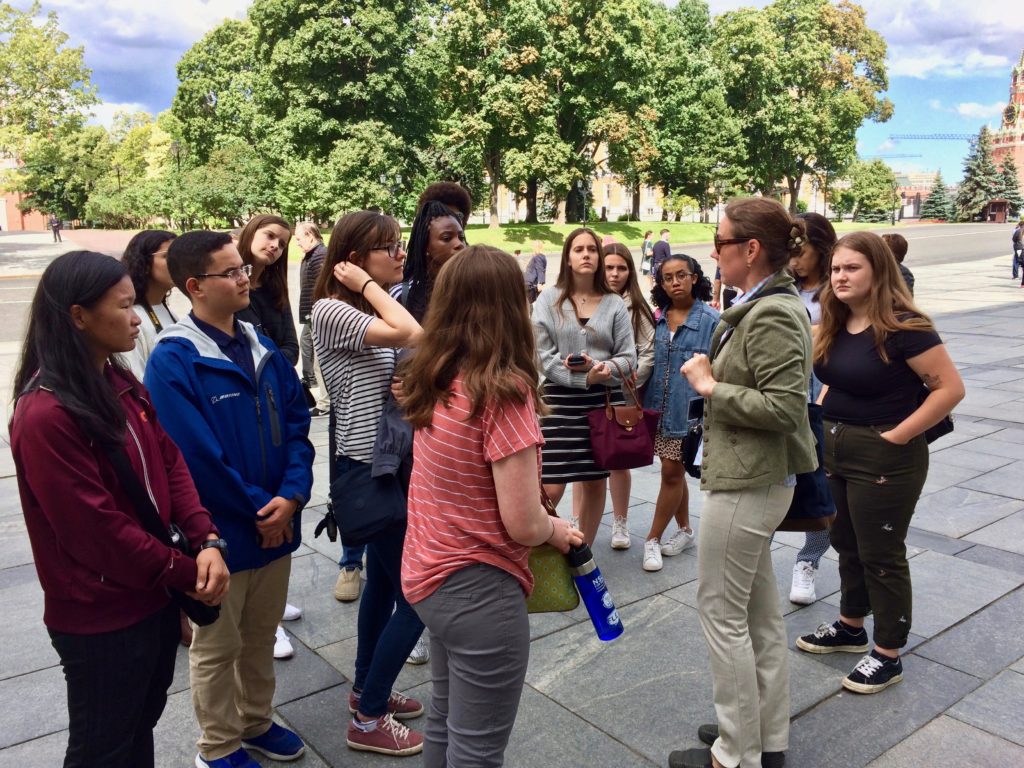
After passing through the tower, our tour guide explains the buildings we see around us.
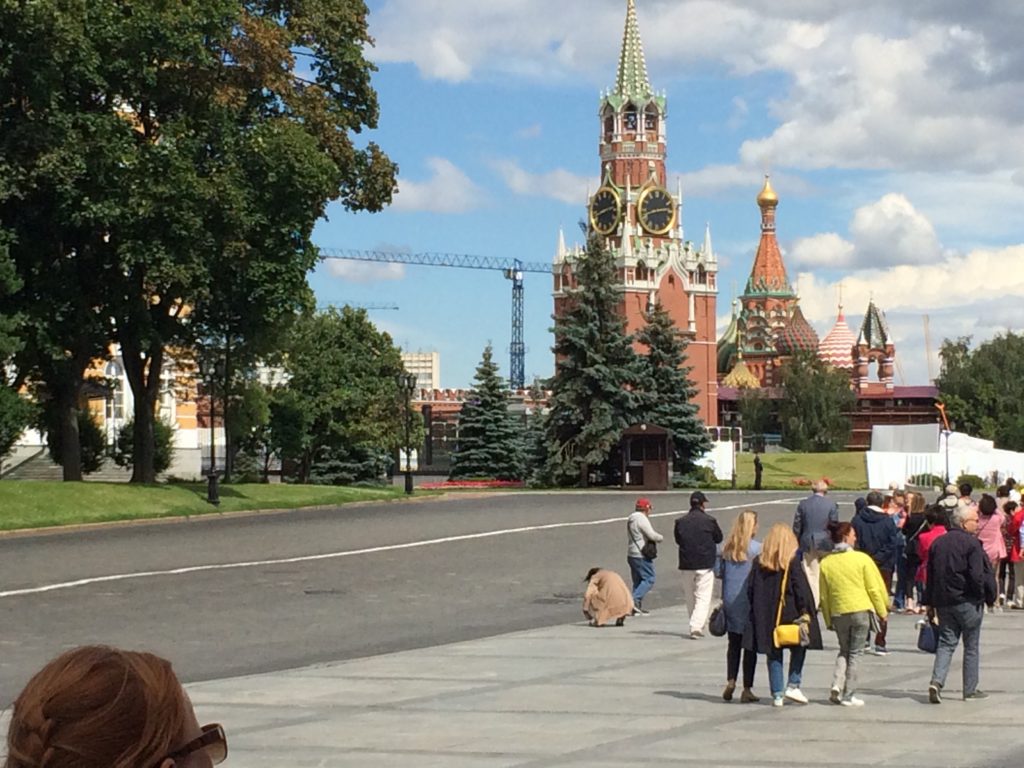
A view of the Spasskaya Tower, the official entrance to the Kremlin. Beyond it, standing on Red Square, is St. Basil’s Cathedral.
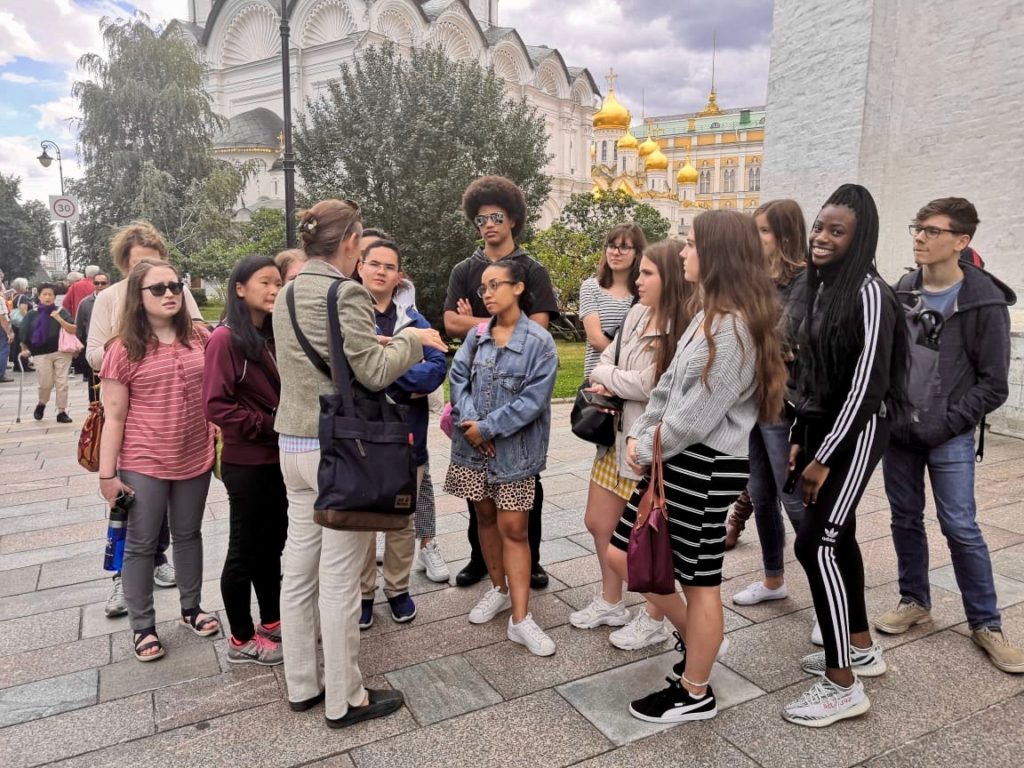
Our tour guide explains what we’ll see on Cathedral Square.
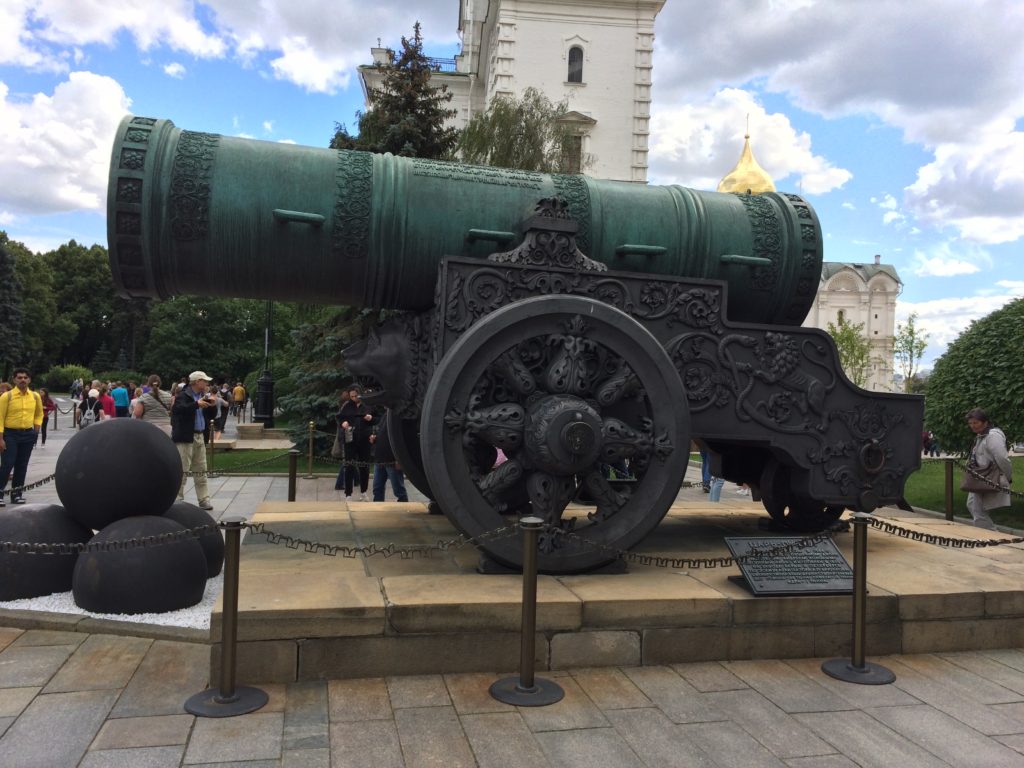
The Tsar Cannon was cast in bronze in 1586 and, per the Guiness Book of Records, is the largest—by caliber—in the world. While it has never been used during wartime, the cannon bears traces of at least one firing.
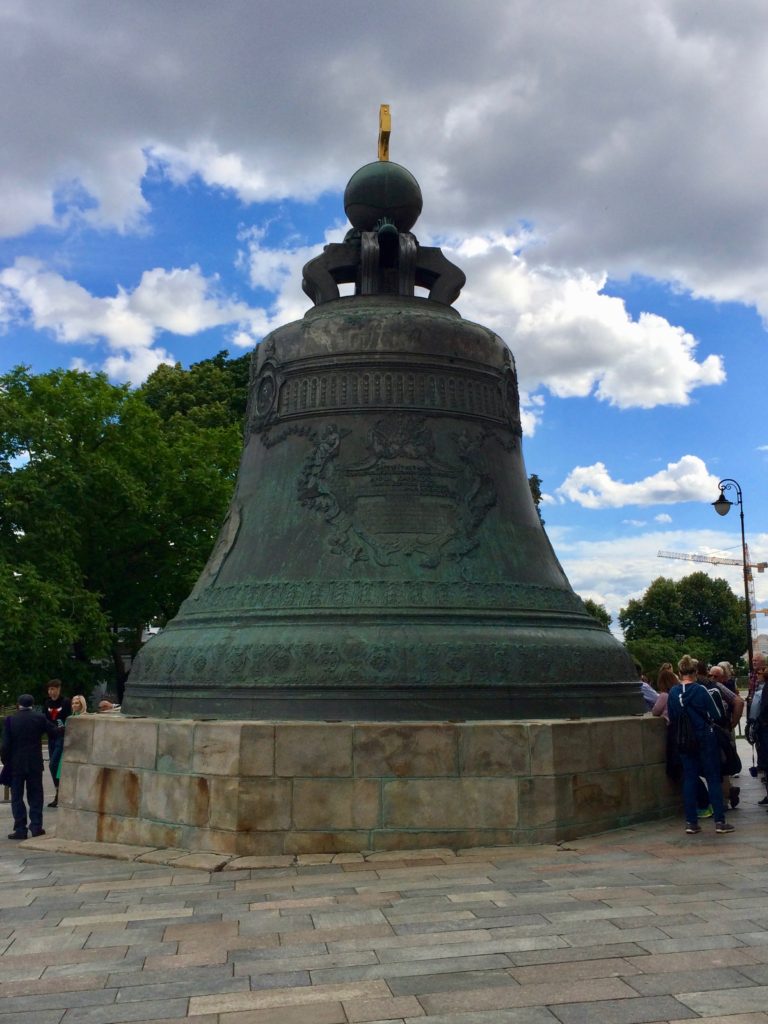
The Tsar Bell was commissioned by Empress Anna Ivanovna, a niece of Peter the Great. It has never been in working order, suspended, or rung. The largest bell in the world, it is decorated with relief images, including nearly life-size images of Empress Anna and Tsar Alexey, who was reigning at the time the previous Tsar Bell was cast. The bell was cast in 1735, and ornaments were added as the bell was cooling. Before the last ornamentation was completed, however, a major fire broke out in the Kremlin in 1737. The fire spread to the temporary wooden support structure for the bell, and fearing damage, guards threw cold water on it, causing eleven cracks. In addition, a huge slab (23,000 lbs) broke off. For a time, the bell served as a chapel, with the broken area forming the door.
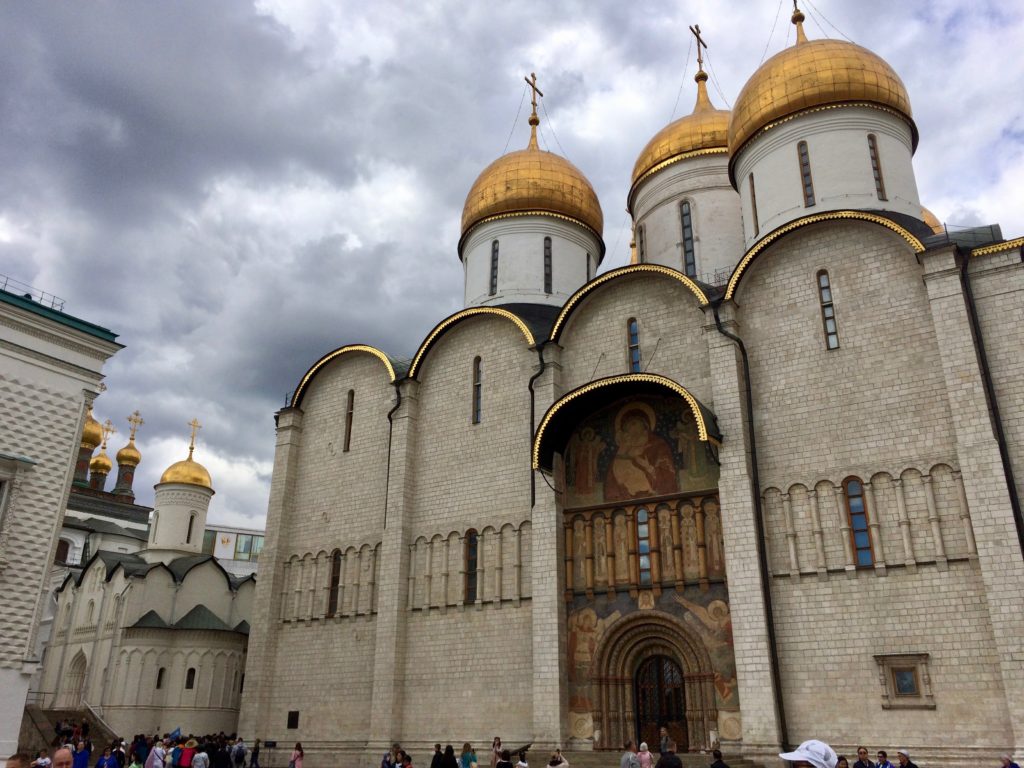
The Cathedral of the Dormition, also known as the Cathedral of the Assumption. The Cathedral is regarded as the mother church of Muscovite Russia. It was constructed between 1475 and 1479. For three hundred years, coronations of Russian monarchs took place here. In addition, it is the burial place for most of the Moscow Metropolitans and Patriarchs of the Russian Orthodox Church.
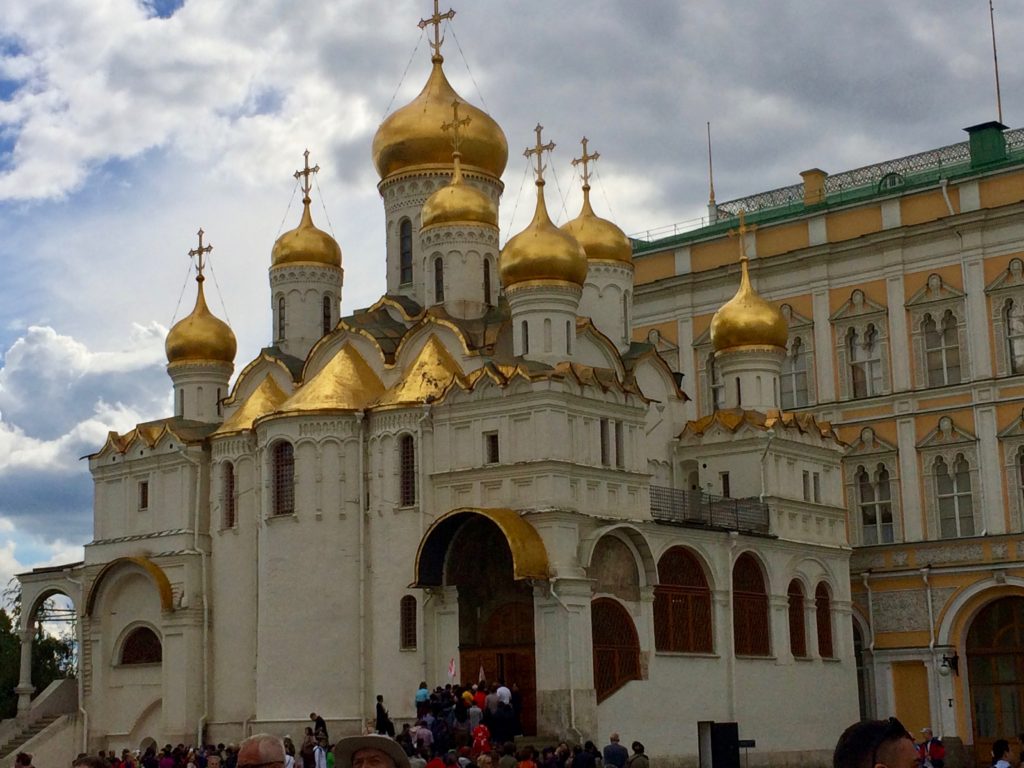
The Cathedral of the Annunciation, originally a personal chapel for the Muscovite tsars. Its abbot remained a personal confessor of the Russian royal family until the early 20th century. The Cathedral was built between 1484 and 1489.
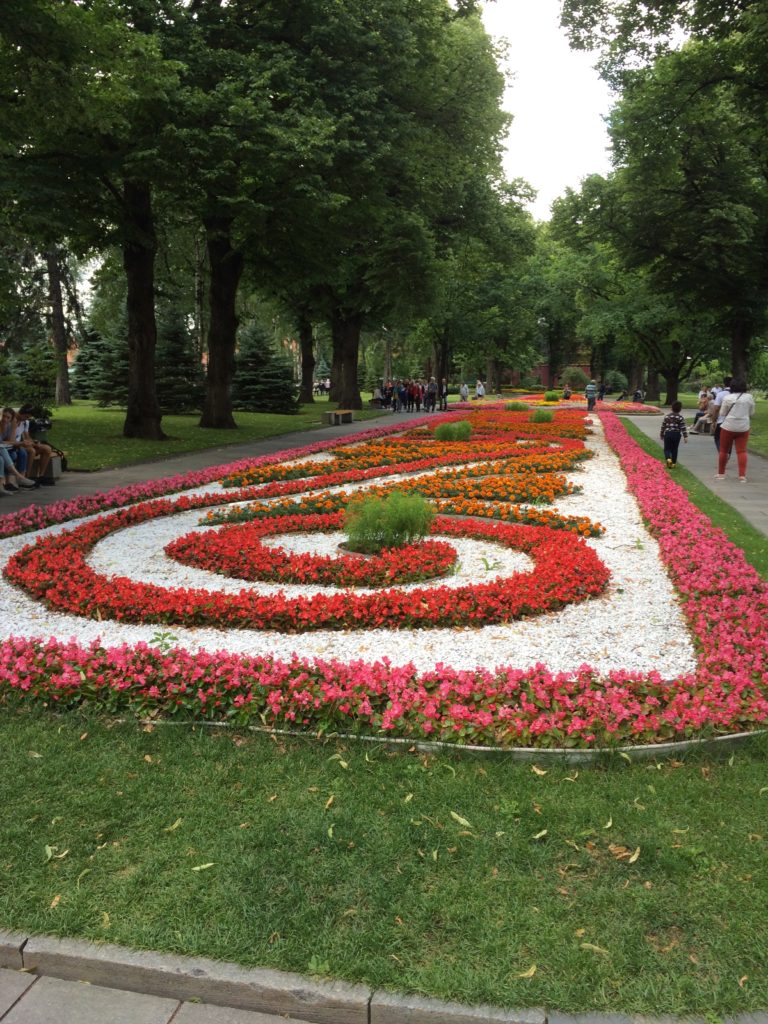
After visiting the three main cathedrals of the Kremlin, we walked through some of the gardens before exiting through the Spasskaya Tower.
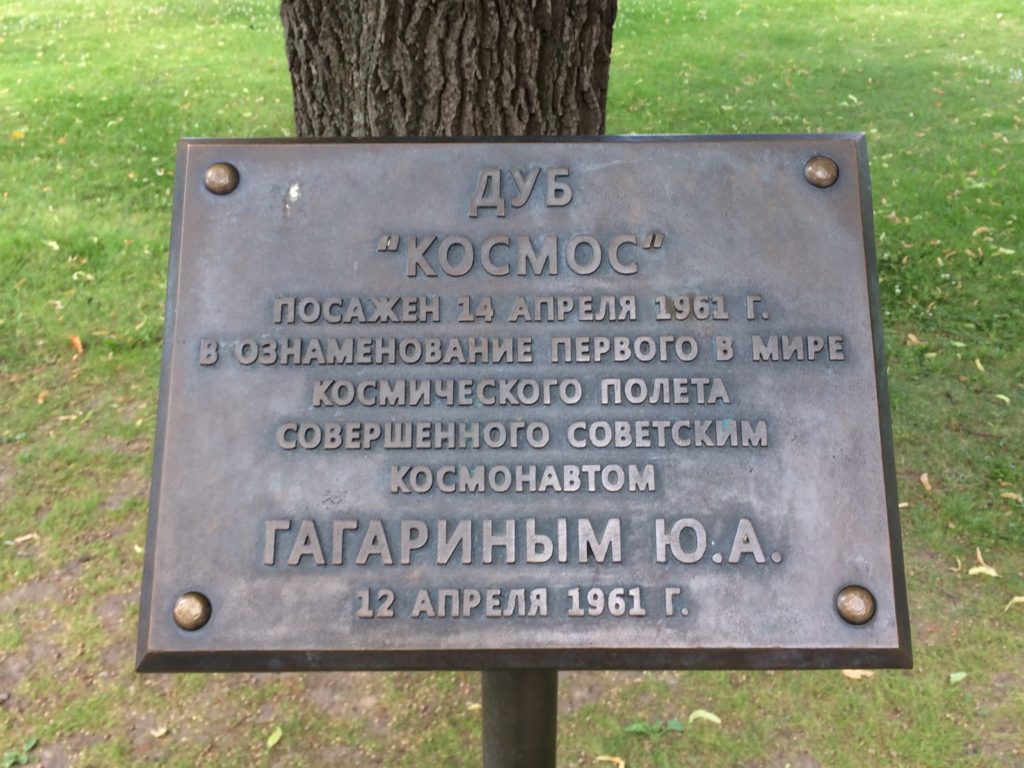
In the gardens, we came across the famous “Cosmos” (“Space”) oak tree, planted on April 14th, 1961, to commemorate the first space flight, achieved by the Soviet cosmonaut Yuri Gagarin.
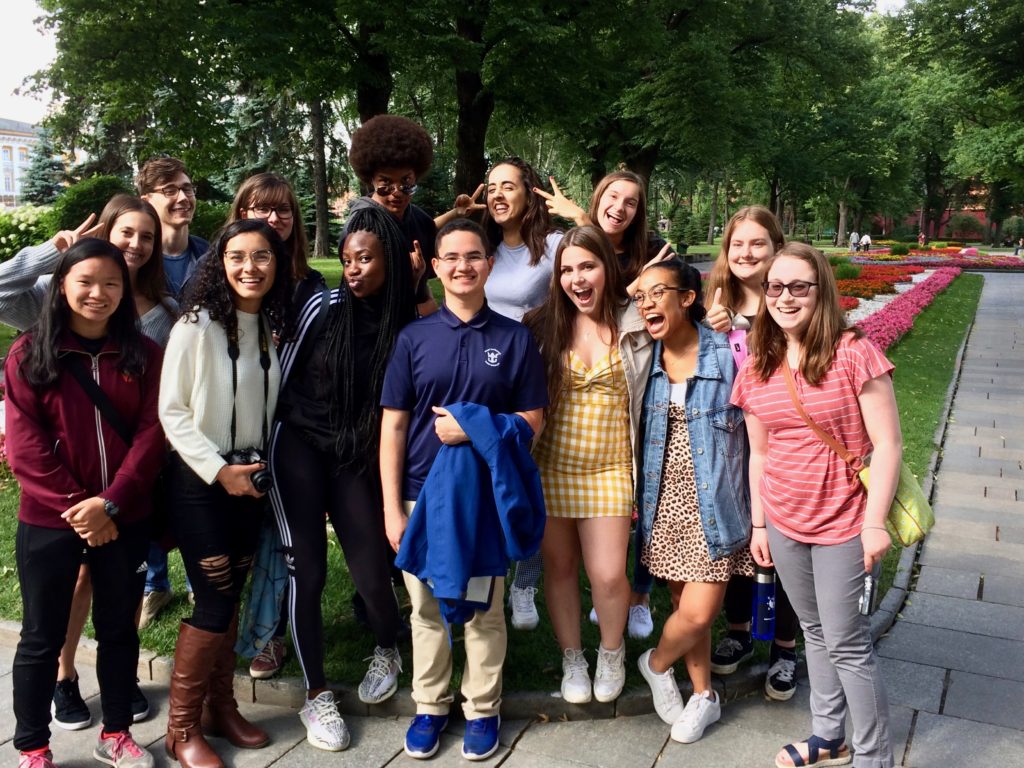
Hamming it up in the Kremlin gardens.
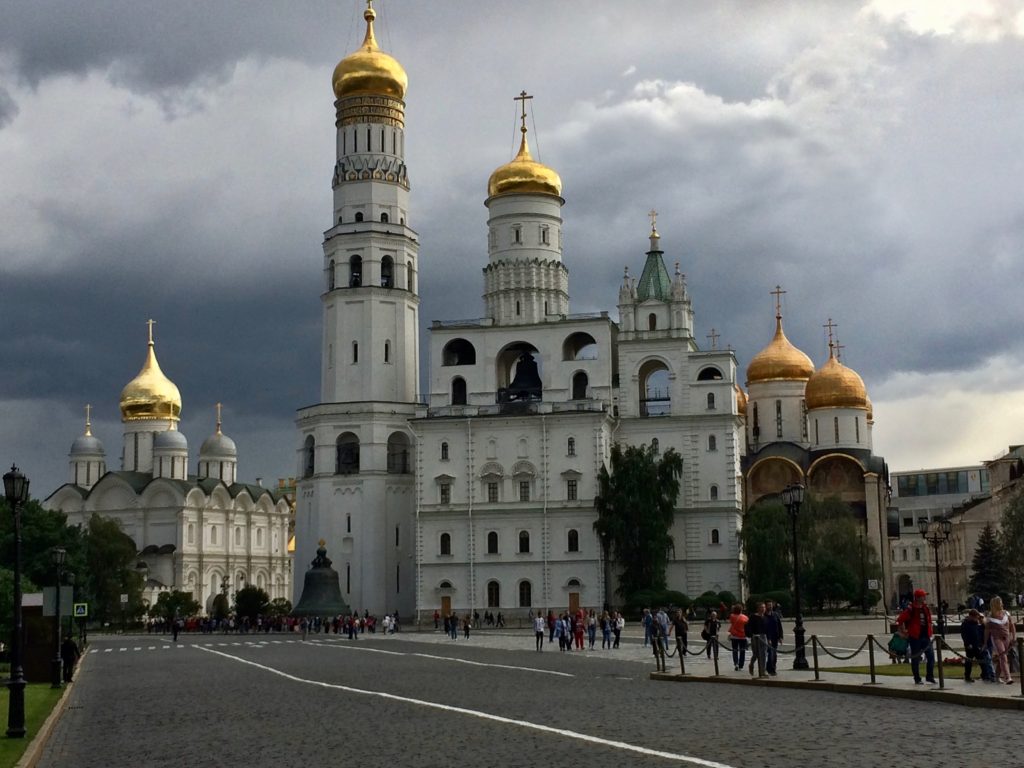
One last photo of the golden domes of the Kremlin cathedrals.
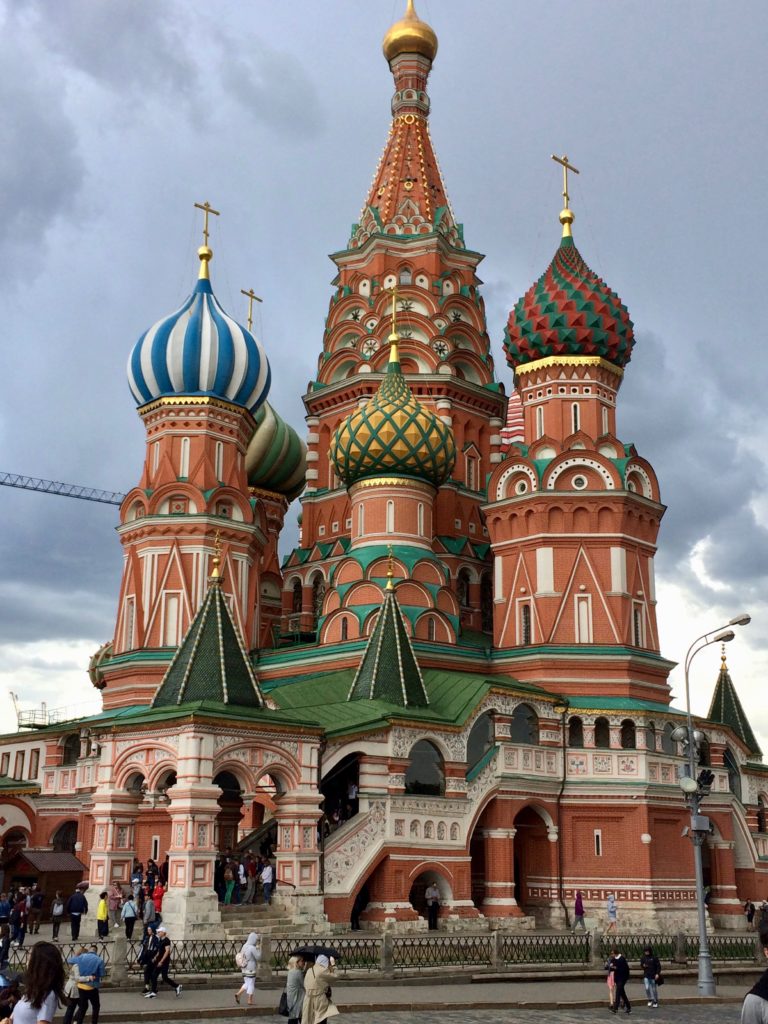
Just outside the Spasskaya Tower, which faces Red Square, stands the majestic and iconic Cathedral of Vasily the Blessed, commonly known as Saint Basil’s Cathedral. It is one of the most recognizable symbols of Russia. Saint Basil’s was built between 1555 and 1561 on orders from Ivan the Terrible to commemorate the capture of Kazan and Astrakhan. The building is shaped like the flame of a bonfire rising into the sky, a design that has no parallel in Russian architecture.
On Tuesday, students enjoyed a briefing at the American Embassy, during which they heard first-hand about careers in the foreign service. Students also learned about opportunities for volunteering at the American Center during their stay in Moscow this summer.
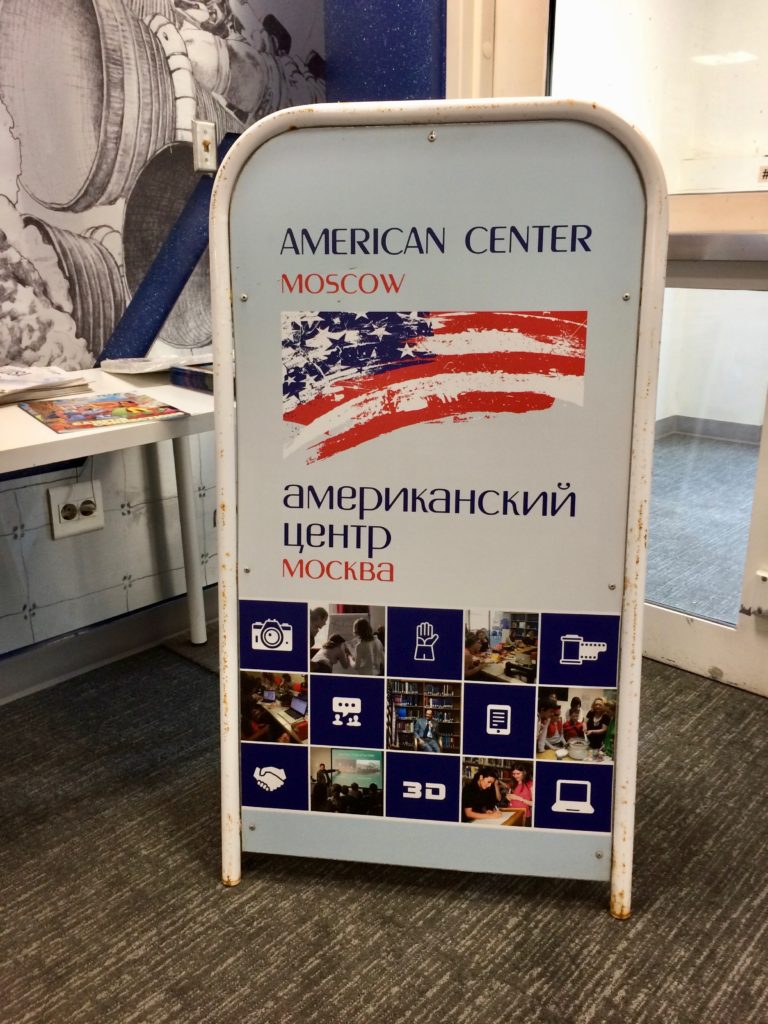
Our briefing took place at the American Center, located in the Embassy.
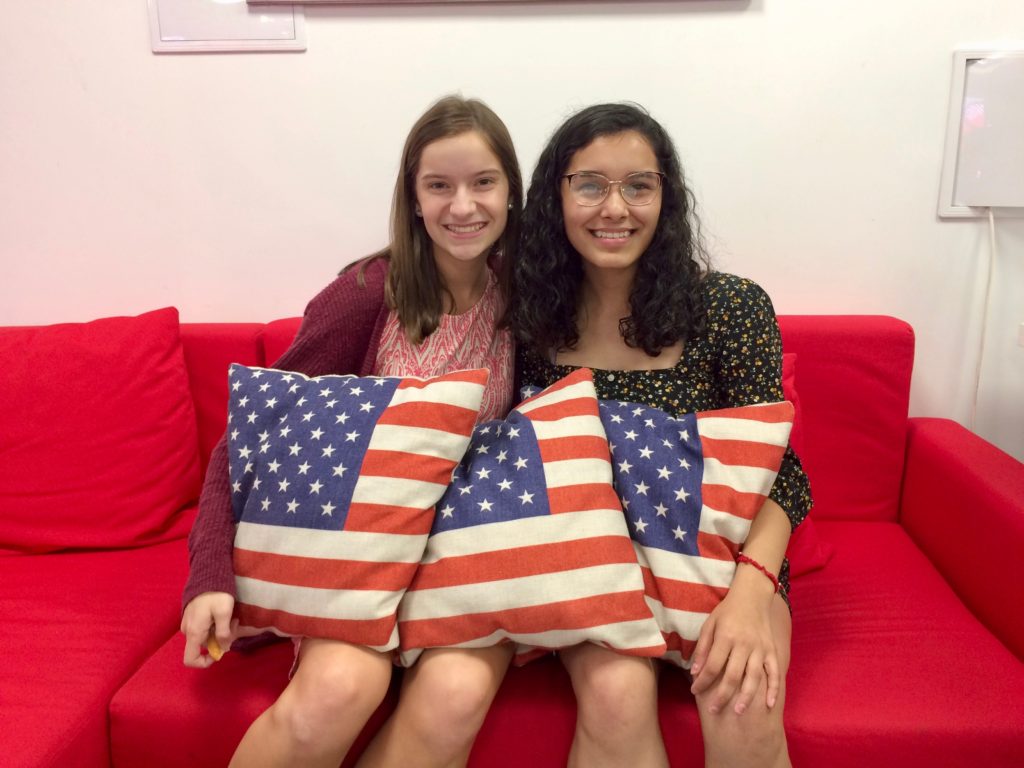
Katie and Marilyn
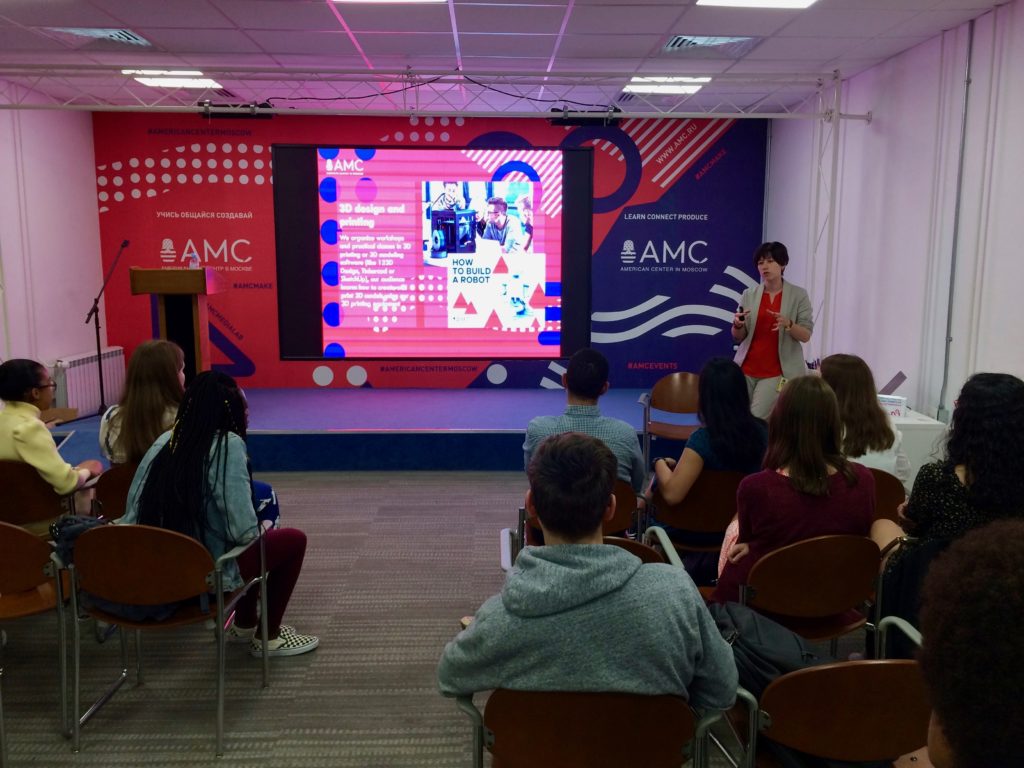
Students learn about the variety of activities that take place at the American Center.
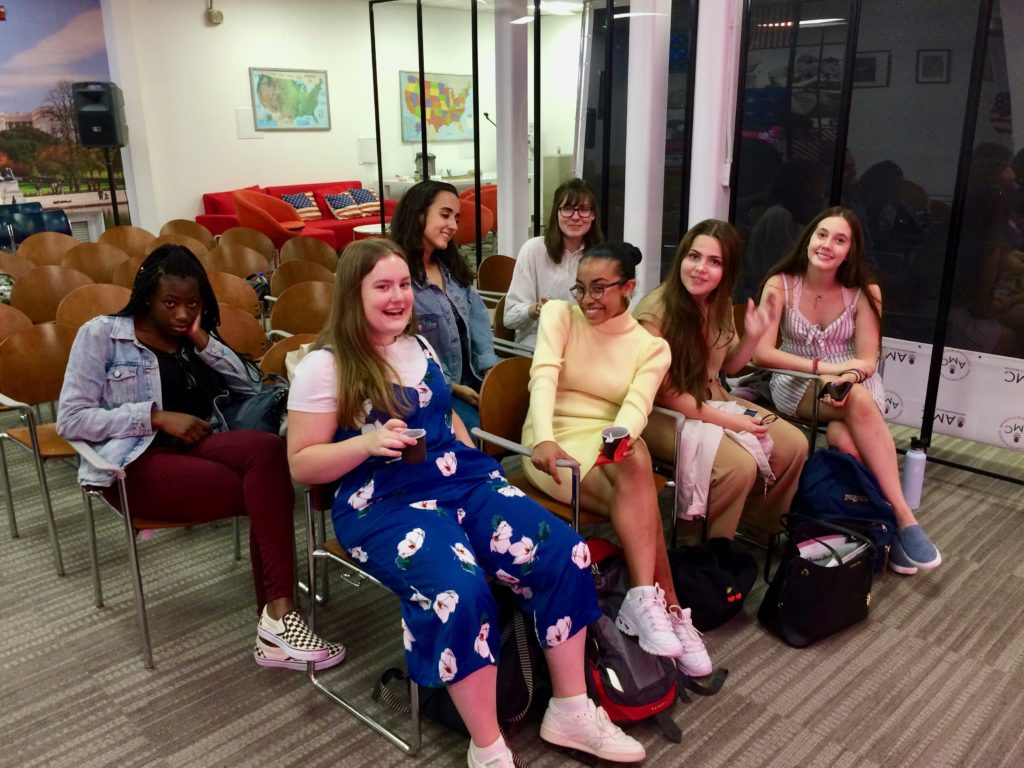
Taina, Gabriella, and Jordan (back row), and Zoe, Andrea, Ava, and Megan wait for the briefing to begin.
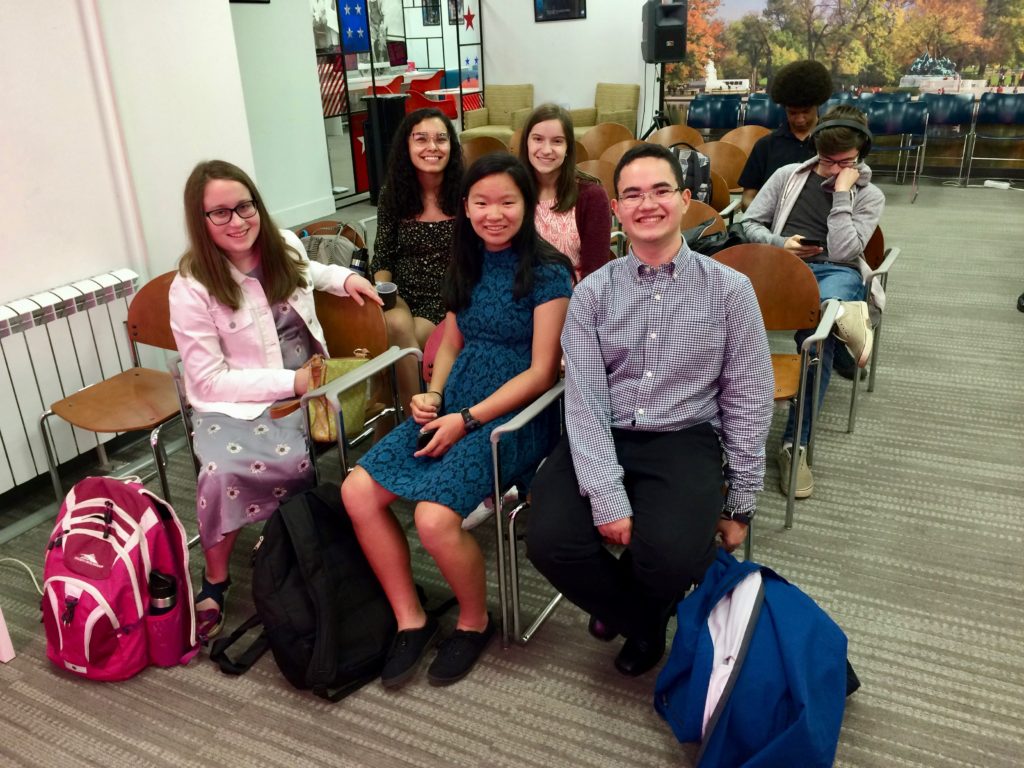
Erin, Elizabeth, Xavier, Marilyn, Katie, Jake, and Darius are eager to hear about life in the foreign service.
Meanwhile, back at the university…
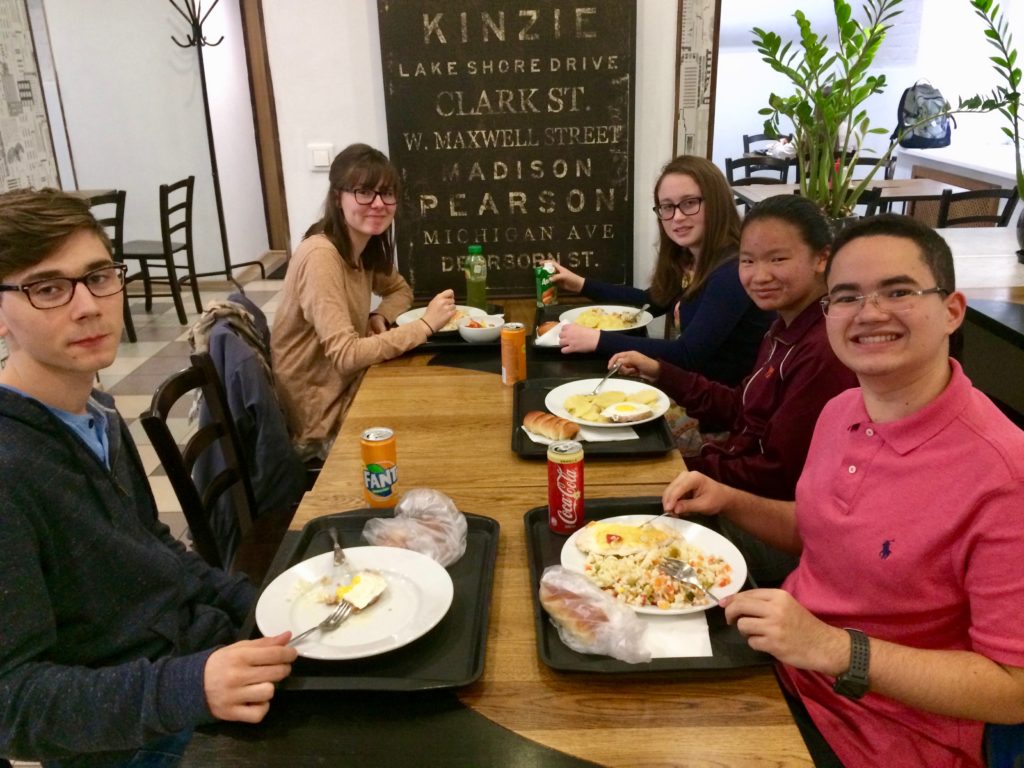
Jake, Jordan, Erin, Elizabeth, and Xavier enjoy a Russian lunch in the cafeteria.
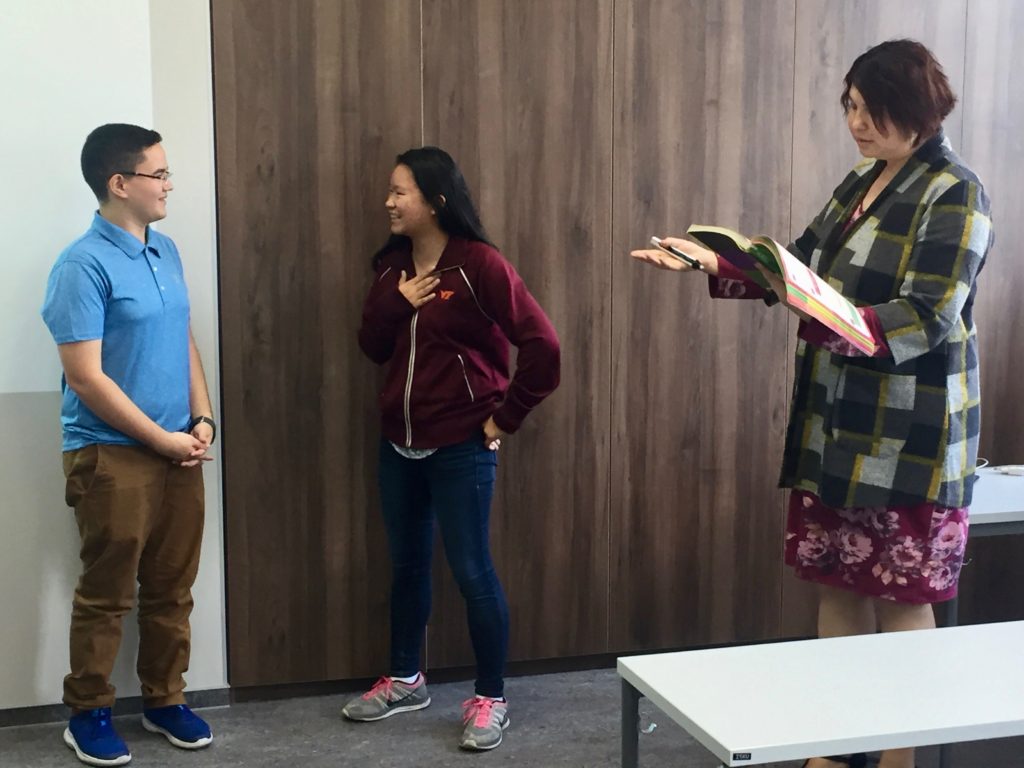
Xavier and Elizabeth practice a dialog in class.
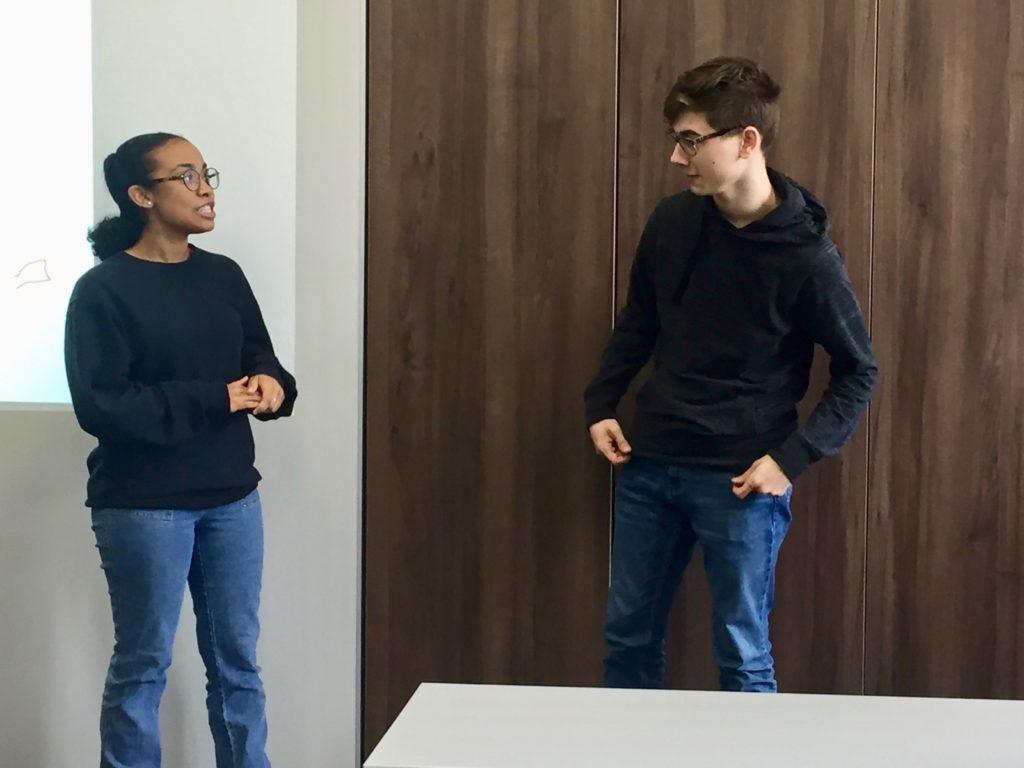
Andrea and Jacob practice new material.
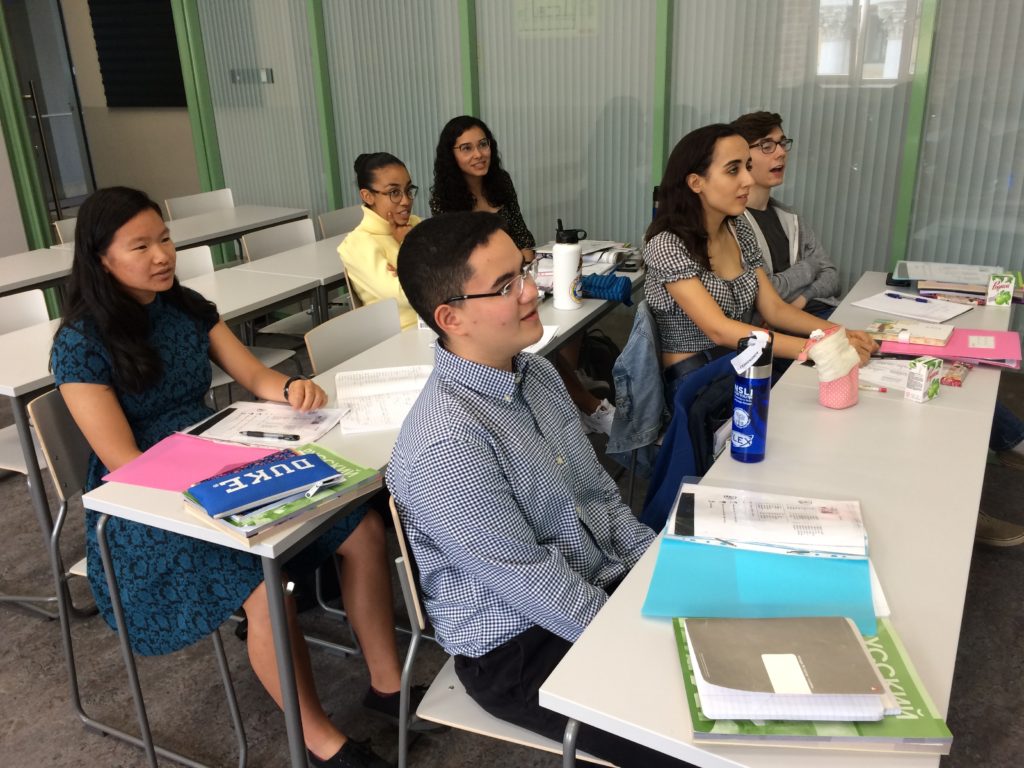
Elizabeth, Andrea, Marilyn, Xavier, Gabriella, and Jake practice counting from one to one hundred.
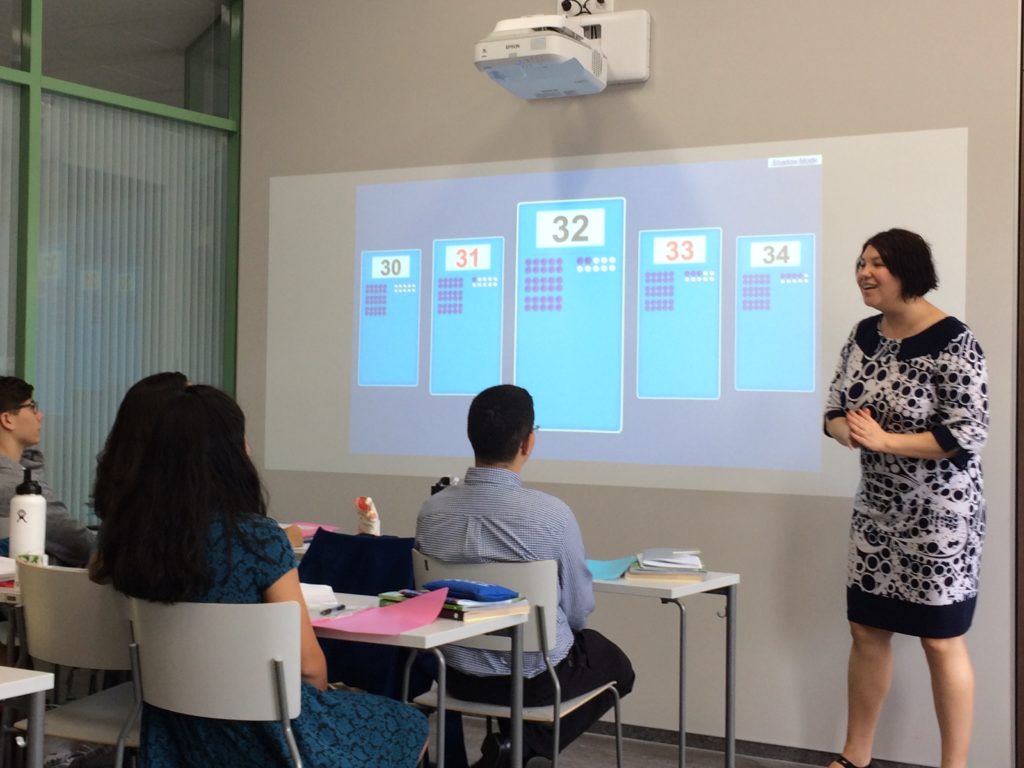
Students practice numbers along with a video in Galina’s class.
I’ll finish this week’s post with photos of the students working with their peer language partners yesterday. They practiced asking and answering questions, discussed what they do in their free time, sang a Russian song, played a lively game of charades, and worked in teams to practice new vocabulary.
More to come next week!
